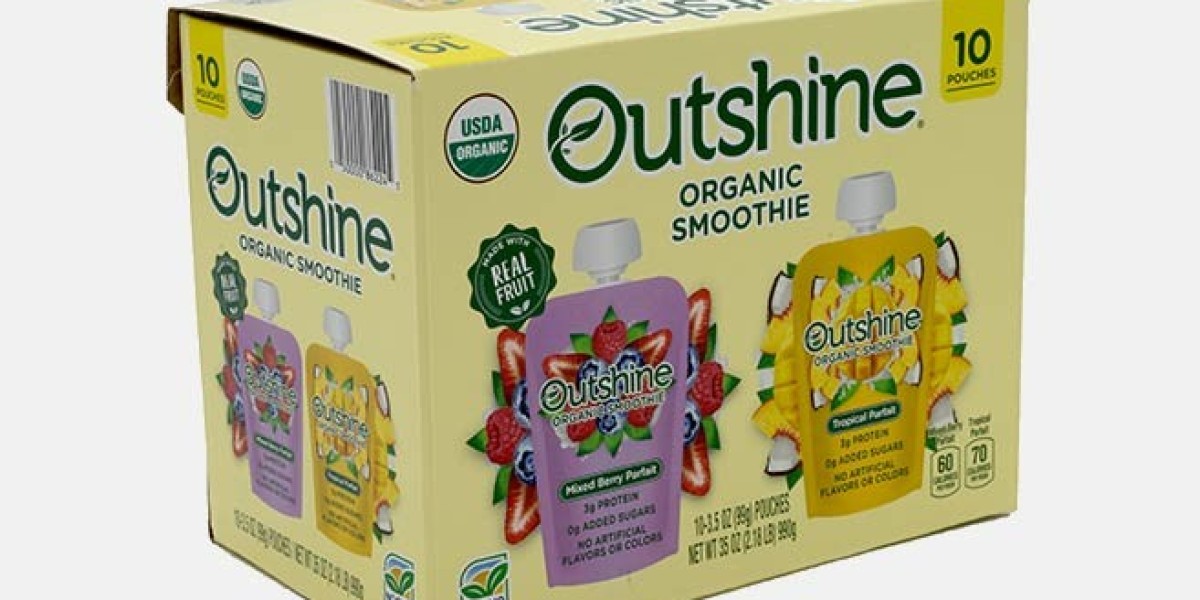Retail Ready Packaging (RRP) is transforming the way products are displayed, handled, and sold in retail environments. In an age where efficiency and visual appeal are key to driving sales, RRP has become an essential strategy for both manufacturers and retailers. By offering a solution that optimizes packaging for shelf-readiness, RRP enhances the customer shopping experience, increases supply chain efficiency, and promotes brand visibility.
This article explores what Retail Ready Packaging is, its key benefits, and how businesses can leverage it to succeed in today’s competitive retail landscape.
What is Retail Ready Packaging (RRP)?
Retail Ready Packaging, also known as Shelf Ready Packaging (SRP), refers to packaging designed for easy identification, stocking, and immediate display on retail shelves. It streamlines the process from production to the sales floor by eliminating the need for retailers to unpack or arrange products individually. The idea behind RRP is to make it simpler and faster for retailers to stock products, while providing customers with easy access to items and appealing product displays.
RRP typically comes in the form of boxes, trays, or cases that can be transformed into a display unit by removing a portion of the outer packaging. It ensures that products are protected during transit and arrive in a retail-ready format, saving time and labor for both retailers and manufacturers.
Key Characteristics of Retail Ready Packaging
For packaging to be considered Retail Ready, it must meet certain criteria:
Easy to Identify
Retail staff should be able to quickly recognize the product without opening the packaging. Clear branding, product information, and labels on the exterior make it easy to identify the contents at a glance.Easy to Open
RRP should be designed for quick and simple opening, ideally without the use of tools. This minimizes handling time and allows for swift restocking on the shelves.Easy to Shelve
The packaging must be efficient to stock, either by fitting directly on retail shelves or being part of a modular display that enhances the store layout. RRP is typically designed to align with standard shelf dimensions for seamless placement.Easy to Shop
From a customer perspective, products inside RRP should be easily accessible. This may involve clear visibility of the products, organized arrangement, and ease of removing the product from the packaging.Easy to Dispose or Recycle
Once the packaging has served its purpose, it should be easy to break down and dispose of. Many RRPs are designed with sustainability in mind, using recyclable or biodegradable materials.
The Benefits of Retail Ready Packaging
Increased Shelf Efficiency
One of the most significant advantages of RRP is that it saves time and labor in stocking products. Instead of unpacking individual items, retail staff can quickly place the entire display unit on the shelf, reducing restocking time. This allows store employees to focus on customer service and other critical tasks.Enhanced Product Visibility
RRP allows brands to create eye-catching displays that draw customer attention. The outer packaging often doubles as a marketing tool, providing clear branding, product information, and attractive designs. By showcasing the product prominently, RRP helps increase sales and improve brand recognition.Improved Inventory Management
With products being pre-packaged in display units, retailers can better manage inventory. The compact, organized nature of RRP makes it easier to track stock levels and determine when restocking is necessary. This leads to fewer out-of-stock situations and better product availability for customers.Reduced Handling Costs
Since Retail Ready Packaging is designed for efficiency, it reduces the time and labor costs associated with unpacking and arranging individual products. Retailers can stock products faster, while manufacturers can save on secondary packaging materials.Sustainability and Reduced Waste
Many companies are using eco-friendly materials for their RRP solutions, such as recycled cardboard and biodegradable inks. Additionally, the reduced handling and packaging materials minimize waste, contributing to more sustainable retail operations. By opting for recyclable and minimalistic designs, brands also align with consumer preferences for environmentally responsible products.Minimized Product Damage
RRP helps protect products during transit and while being stocked. With the packaging designed to hold and display products securely, there’s less risk of damage during shipping, handling, or shelving. This ensures that products reach customers in perfect condition, reducing return rates and increasing customer satisfaction.
Retail Ready Packaging Formats
There are several common formats for Retail Ready Packaging, each suited to different types of products and retail environments:
Trays and Displays
Trays that serve as both protective shipping containers and shelf displays are among the most popular RRP formats. They are commonly used for food, beverages, cosmetics, and consumer goods. These trays can be easily stacked and placed on shelves, with the product visible and accessible to customers.Wraparound Cases
Wraparound cases are shipping containers that are designed to be opened and converted into shelf displays. They are ideal for products like cans, bottles, and boxed goods. The case can be placed on the shelf with minimal handling, and the front is often removed to reveal the product inside.Corrugated Boxes
Corrugated boxes are durable and can be printed with high-quality graphics and branding. They are ideal for products that require extra protection during shipping, such as electronics or fragile items. These boxes can be easily opened and transformed into point-of-purchase displays.Clip Strips and Hangable Displays
Some products, particularly those in small or flexible packaging, can benefit from hangable RRPs like clip strips or pegboard displays. These solutions are ideal for impulse buys and small consumer items that may not need traditional shelf space.Shelf-Ready Cartons
These are cartons that open up directly into ready-made displays for retailers to place on shelves. They are often used for promotional or seasonal products and allow for high-impact branding and graphics.
The Role of Retail Ready Packaging in E-commerce
While RRP has traditionally been associated with brick-and-mortar stores, its principles are also being applied in the e-commerce space. As online shopping grows, businesses are rethinking their packaging strategies to optimize for shipping efficiency and unboxing experiences. Retail Ready Packaging can be adapted for e-commerce by ensuring that products are well-protected during transit while still offering an attractive presentation when delivered to customers.
For e-commerce, the goal is to maintain the visual appeal of the packaging, enhance brand presentation, and create a memorable unboxing experience. Custom-branded RRP for e-commerce can also include elements like QR codes, social media prompts, or instructions for reusing or recycling the packaging.
Conclusion
Retail Ready Packaging is a smart, efficient, and visually appealing solution that benefits both retailers and manufacturers. By streamlining the stocking process, enhancing product visibility, and reducing handling costs, RRP helps businesses thrive in a competitive retail landscape. It offers an excellent opportunity for brands to boost sales, increase customer satisfaction, and promote sustainability—all while creating an impactful in-store presence.
As consumer expectations evolve and the demand for sustainable practices grows, the importance of well-designed Retail Ready Packaging will only continue to rise. Brands that adopt innovative and eco-friendly RRP solutions will be well-positioned to succeed in the future of retail.








